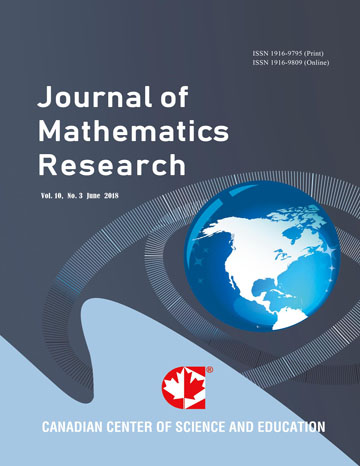On Patterns of Refusals Conversion and Propensity of Converted Refusals to Respond at Later Waves in a Longitudinal Survey
- O. M. Olayiwola
- G.N. Amahia
- A.A. Adewara
Abstract
When a selected sample member refuses to take part in a survey interview, the survey organization may not accept the
refusal as a final outcome, but rather to make further attempts to convert the refusals into an interview. The aim of this
study was to investigate the pattern of refusals conversion and the propensity of the converted refusals to respond at later
waves in a longitudinal survey. A two-stage stratified randon sampling scheme was used with households in Oyo as the
sampling unit. A sample of 750 households were randomly selected from the community and sub-divided into five equal
groups with each group treated as a wave. The recording schedule was used to obtain information on demographic characteristics
including survey process, external environment, age, gender, educational qualification, religion, employment
status, family size, duration of interview and the type of questions. The data were collected through oral interview of the
subjects. Summary statistics were constructed to look at the patterns of conversion of refusals. Logistic model was fitted
to investigate the propensity of converted refusals to respond at later waves following a conversion. At wave 1 of the
survey, 109 house heads were interview in households with a response rates (in percentage) of 72.67.The interview period
was an average of 8 minutes per house head. The response rate at wave 2, wave 3, wave 4 and wave 5 were 82, 81.33, 82
and 80.67 respectively. Outcomes of a conversion attempt were a full interview and a proxy interview. Five house heads
went through the conversion process at wave 1 and data were successfully collected on 2 of them (40%). All of them were
interviewed again at wave 2 (100%). Those converted refusals at wave 1, 100% gave a full interview six months later. For
house heads who were converted between wave 1 and wave 5 continued to give full interviews at every wave up to wave
5. For all other waves, the converted refusals participated throughout the survey. Logistic model showed that, those who
were converted to a full interview rather than proxy interview were the most likely to give a full interview at subsequent
wave. When we included in the model, information on the wave in which the initial conversion was took place and the
time since conversion, we found that those whose initial conversions were in earlier and later waves were less likely to
give a full interview compared with those were converted at wave 3. Adding demographic information suggested that
male, people with their ages between ((30 − 50) years, respondents with primary education were likely to take part again
following a conversion.
- Full Text:
 PDF
PDF
- DOI:10.5539/jmr.v3n1p121
Index
- ACNP
- Aerospace Database
- BASE (Bielefeld Academic Search Engine)
- Civil Engineering Abstracts
- CNKI Scholar
- DTU Library
- EconPapers
- Elektronische Zeitschriftenbibliothek (EZB)
- EuroPub Database
- Google Scholar
- Harvard Library
- IDEAS
- Infotrieve
- JournalTOCs
- MathGuide
- MathSciNet
- Open policy finder
- RePEc
- ResearchGate
- Scilit
- Technische Informationsbibliothek (TIB)
- The Keepers Registry
- UCR Library
- Universe Digital Library
- WorldCat
Contact
- Sophia WangEditorial Assistant
- jmr@ccsenet.org
